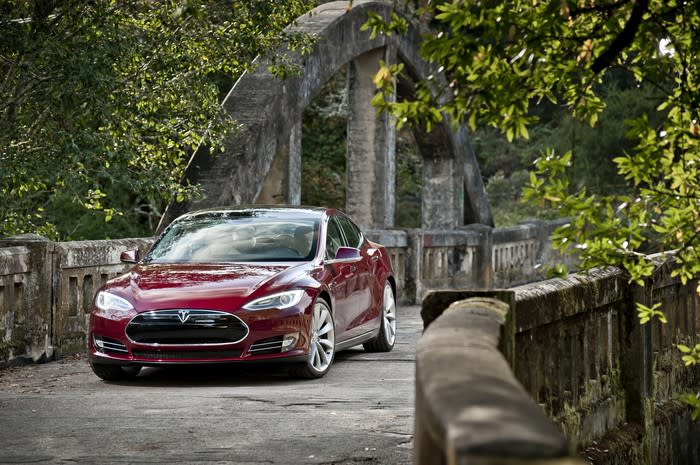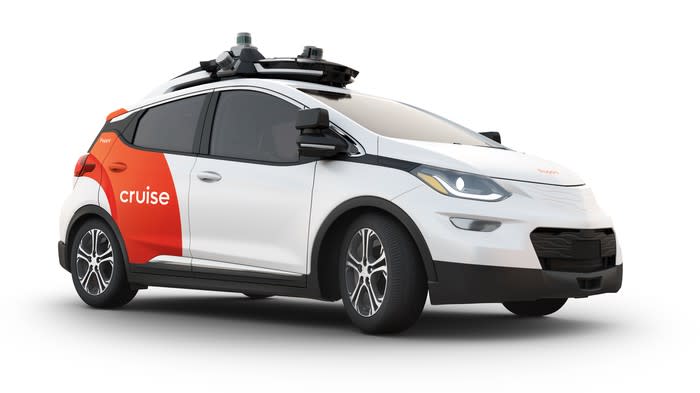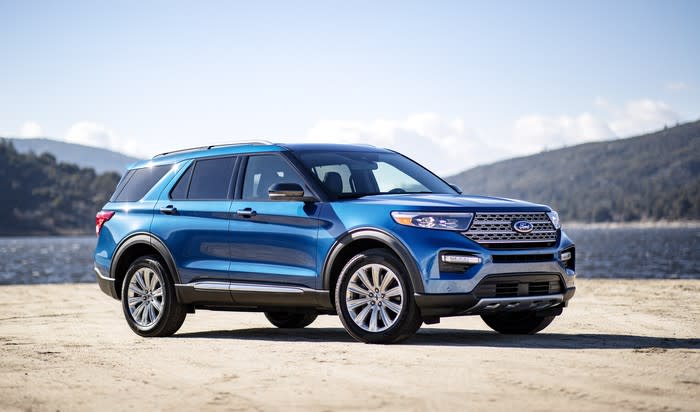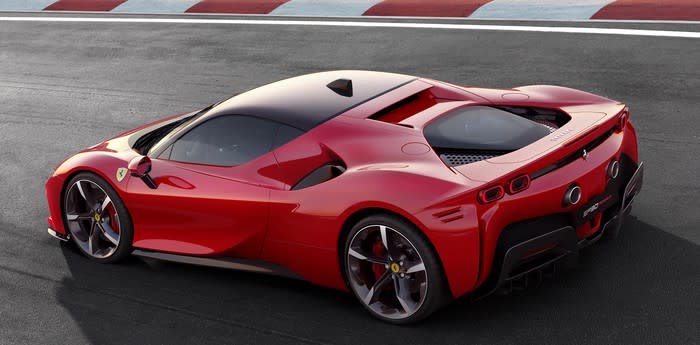How to Invest in Car Stocks
Many experts say that the car industry could change more in the next 10 to 15 years than it has changed in the last 50 years. The trend toward electric vehicles, the emergence of self-driving technology, and new technology-enabled models of personal mobility all threaten to upend the industry's long-established pecking order.
New entrants, notably electric-vehicle maker Tesla, have drawn a great deal of attention (and money) from disruption-minded investors in recent years. But what seemed clear to many observers a few years ago -- that new entrants would displace the car industry's established giants -- now seems muddier. Some of the "dinosaurs" have turned out to be quite nimble and technologically savvy, while Tesla has struggled to master the fundamentals of profitable mass production.
Making sense of the car industry has never been easy, but it's arguably harder than ever right now. That said, if we step back and look at fundamentals, we can see that there are still market-beating opportunities for investors in the rapidly evolving world of cars and trucks. Let's dive in.

Investors were wowed by the original Tesla Model S, which was (and is) rightly regarded as a landmark vehicle. But while Tesla's sales have grown dramatically in the years since the Model S's launch, the company is still struggling to deliver on its original promise. Image source: Tesla, Inc.
What is the car industry?
Today's "car industry" includes much more than the traditional big companies that make cars. For starters, let's expand our definition of "cars" to include what the industry refers to as "light vehicles":
Cars, including sedans, coupes, convertibles, and sports cars
Light trucks, including pickups and commercial vans
Sport-utility vehicles (SUVs), including both traditional truck-based SUVs, and "crossovers" based on car-like unibody architectures
To answer the question, the "car industry" is the network of companies that designs, engineers, and builds light vehicles. That network includes automakers, their suppliers, and tire manufacturers.
Type of car company | Description | Examples |
|---|---|---|
Automakers | Companies that design, engineer, and assemble cars, trucks, and/or SUVs. (Automakers are sometimes referred to as "OEMs," for "original equipment manufacturers.") | Ford Motor Company Tesla BMW AG |
Suppliers | Companies that manufacture automotive components for sale to automakers. Suppliers often have substantial engineering resources and contribute to the design of the parts they make. | Magna Aptiv Gentex |
Tire manufacturers | Companies that make tires. These may be sold to automakers (for use on new vehicles), to consumers as replacements, or both. | Bridgestone Michelin Goodyear Tire & Rubber |
For the most part, the auto industry is a stable, mature industry with relatively low growth. But as we'll see, there are still opportunities to be found, particularly among the manufacturers and suppliers, with new technologies and business models now threatening to shake up the industry as it has evolved over the last century.
Key metrics and factors to watch
SAAR
The "SAAR," which stands for "seasonally adjusted annualized rate," is a measure of the pace of new-vehicle sales. There are many SAARs reported, but the one most often cited in discussions of car stocks is the U.S. light-vehicle SAAR, which is used as a barometer of the health of the U.S. new-vehicle market.
ATPs and incentives
"Incentives" are those cash-back or cheap-financing deals that automakers often advertise. For car-stock investors, there are three key things to know about incentives:
Incentives are funded by the automakers, not by dealers.
Generally speaking, pickup trucks have higher incentives than other kinds of vehicles. That's not because pickups are harder to sell, it's just the way the market has evolved over time. A given automaker's pickup incentives should be judged against rivals' incentives on pickups, not against incentives in general.
Broadly speaking, higher incentives mean a thinner profit margin. (But again, this is relative. Prices are often set with incentives in mind, especially on pickups. For example: Automaker X is offering $4,000 incentives on its pickups, while Automakers Y and Z are offering $6,000. All three are probably earning solid profits, but Automaker X is probably doing better than the others.)
"ATP" stands for "average transaction price." In autos, average transaction prices are reported net of incentives -- when you can find them. (The best sources are proprietary, but automakers will often include them in quarterly sales reports, and they show up regularly in the business media.) Incentives are sometimes expressed as a percentage of ATP, which can be a useful metric for year-over-year comparisons if overall vehicle prices are rising sharply.

High incentives have become a cost of doing business in the huge and lucrative U.S. pickup-truck market. Image source: Ford Motor Company.
One big thing to know: Car stocks are cyclical stocks
Automakers and their suppliers are classic cyclical stocks: Their profits rise and fall with the level of new car sales, which is closely correlated to consumer confidence. Think about it: When consumers and businesses are worried about the economy, they postpone major purchases that aren't absolutely essential. Often, a new car (or for a business, a new fleet of trucks) falls into that category, because the old one can be driven for another year.
Because automakers have high fixed costs (factories, tooling, labor contracts) and face fierce competition, their profit margins are quite thin even during good economic times. (How thin? An automaker with an 8% operating margin is doing pretty well.) Not surprisingly, automakers' profits have historically tended to be tiny or nonexistent during recessions, when auto sales fall close to or below the levels necessary to cover those high costs. Suppliers tend to follow the same pattern.
Historically, automakers that have swung to losses during recessions have cut spending on their future-product programs. That practice tended to leave them short of fresh products in showrooms when buyers returned in the early stages of the recovery. That, in turn, left them vulnerable to competitors that had managed to keep their product-development programs funded. (Most of the global automakers now maintain hefty cash reserves intended to sustain future-product spending through a downturn.)
Another concern for investors who might be considering holding auto stocks through a recession: If the automaker pays a dividend, is it a sustainable dividend? Often, in past recessions, automakers that cut or eliminated future-product programs to save money would cut or eliminate their dividends as well. While the economy is still healthy and auto sales are still fairly strong, history teaches us that there will be a recession at some point -- and auto sales will fall.
Understanding the auto sales cycle
As mentioned above, automakers and analysts pay close attention to a number called the SAAR, which quantifies the pace of auto sales. The SAAR is an estimate of how many vehicles would be sold over a full calendar year at the pace seen in a given time period, usually a month.
Analysts focused on different parts of the industry in different parts of the world track lots of different SAARs, but the one we care about most as U.S.-based investors in car stocks is the SAAR for "light vehicle" sales in the United States. As noted earlier, "light vehicles" are cars, pickup trucks, and SUVs, the types of vehicles typically purchased by individual consumers.
Here's the monthly SAAR for U.S. light-vehicle sales for every month in the last 20 years:
US Total Light Vehicle Sales data by YCharts.
As you can see, auto sales dropped in the recession of 1990-1991, rose in fits and starts from there to a rough plateau between 2000 and 2007, fell sharply in the Great Recession of 2008-2009, and recovered from there to another plateau from roughly 2015 to now.
That's what the cycle looks like: Sales rise to a plateau and then fall sharply. A high sales plateau is good news for the automakers for a while; high demand means lots of sales at good prices, which translates to strong margins and good profit.
But automakers, like investors, want growth. Historically, as plateaus have aged, some automakers have boosted incentives to try to generate year-over-year sales gains. That forces rivals to make a tough choice: Raise incentives to match rivals, at the cost of profit; or preserve margins and lose some sales.
The result is that as the cycle ages, automakers' profits tend to level off or shrink, even if the overall level of sales stays high -- and often well before the broader economy begins to slip. An automaker with a strong, sustainable dividend might still be a buy at that stage of the cycle, but investors need to be clear-eyed about what's happening.
All of this presents a challenge if you're looking to car stocks for long-term gains. Aside from cyclical effects, there isn't generally a lot of profit growth among car companies, because most are stable, mature companies.
But there are opportunities from time to time, even among the big global automakers, even in a cyclical plateau.
Opportunities in car stocks
A restructuring automaker can be a good investment
An automaker that finds its margins squeezed by rising costs might decide to make significant changes to its operations. If the rising costs (and the costs of the restructuring) have made the company's stock relatively cheap, it can be a good buy for an investor who has confidence in the company's management team and restructuring plan.
Here's an example. In early 2009, the industry was at a cyclical low, with General Motors and Chrysler in bankruptcy. But Ford had a big cash hoard and some impressive new models -- and it had CEO Alan Mulally, whose famous "One Ford" plan would succeed in restoring Ford to sustainable profitability.
Investors who saw all of that and bought Ford in early 2009 were well rewarded over the next two years:
That's a somewhat extreme example, of course, because in essence Ford stock was priced for imminent bankruptcy in early 2009. But remember that many automakers pay good dividends. If the stock is even somewhat beaten-up, and if the automaker can sustain the dividend through whatever restructuring lies ahead, a patient investor can still get market-beating returns by holding the stock and reinvesting the dividend until profitability improves.
There may also be opportunities for investors in the new technologies and business models that are threatening to upend the auto industry. Electric drivetrains and autonomous-vehicle technology each threaten to disrupt the automotive status quo in different ways. Opportunities have been limited so far, but that could change.
Electric vehicles
Governments around the world are considering (and in some cases, already implementing) policies aimed at speeding the auto industry's transition to zero-emissions propulsion. Those policies, and the example set by Tesla's fast, stylish battery-electric vehicles -- and the attention (and sales) they've drawn -- have spurred most automakers to begin development of their own battery-electric models.
While the advent of long-range electric-vehicle technology has made room for new entrants like Tesla, most of the major global automakers have announced plans to introduce new battery-electric models over the next several years. Put another way, while Tesla has entered the auto industry (a significant achievement), it's unlikely to "disrupt" it by driving the incumbent automakers out of business.
From the perspective of manufacturing, the transition from internal-combustion drivetrains to battery-electric systems is incremental, not revolutionary: Much of the technology, tooling, and knowledge required to mass-produce internal-combustion vehicles is still required to make battery-electric vehicles.
For investors, the opportunities in electric vehicles will be found with:
New automakers that manage to achieve sufficient scale to become sustainably profitable. (Note that this feat has so far eluded Tesla, a company that has existed since 2003.)
Established automakers that manage the transition to battery-electric vehicles well, delivering vehicles that consumers are willing to buy at profitable prices.
Suppliers of components for electric vehicles (particularly battery cells).
Driverless cars
For several years now, investors have heard that autonomous-vehicle technology has the potential to completely disrupt the traditional auto industry and traditional models of personal mobility. But investing in that potentially disruptive maybe-trend has proven difficult, because the companies that are leading the way to self-driving vehicles are, for the most part, either small and private -- or big and diversified.

General Motors' self-driving subsidiary, Cruise, is one of several companies thought to be among the leaders in the race to deploy self-driving taxis at scale. Image source: General Motors.
Take Waymo LLC, the current incarnation of what started back in 2009 as the Google Self-Driving Car Project. It's widely regarded as the leader in this space, because of its early start, association with Google, and smooth-riding demonstration vehicles. But we can't invest directly in Waymo because it isn't public: It's a subsidiary of Google parent Alphabet, and not a particularly big one. Next in line behind Waymo are companies like Cruise and Argo AI, both of which are privately held. Cruise is a General Motors subsidiary; Argo AI is owned by Ford, Volkswagen AG, and its own employees.
As I write this in mid-2019, there are no "pure play" investments in self-driving. But if you're interested in investing in self-driving technology, and want some exposure to the technology's potential, there are a few possibilities:
Invest in an automaker with a strong self-driving development program, like Ford or General Motors.
Invest in a car-industry supplier that isn't completely focused on self-driving, but that is playing a major role in automakers' self-driving efforts, like Aptiv.
Invest in a company that could see a big jump in profitability once self-driving technology becomes available, like Uber Technologies or Lyft.
Risks in car stocks
All stocks come with risks. Car stocks come with some risks specific to the nature of the industry:
Cyclical risk: As we've seen, the industry's profits (and stock prices) tend to rise and fall with consumer confidence.
Reinvestment risk: An automaker that can't (or decides not to) continue investing aggressively in future products is at risk of falling behind rivals, as its less-competitive products will require greater discounts to be sold.
Disruption risk: It's likely that at least some of the big global automakers (and their suppliers) will adapt to the new world of self-driving and electric vehicles and continue to thrive. But some may not survive the transition.
Key car stocks to watch
There are dozens of publicly traded car stocks. Here are 10 that are widely followed, deserve closer attention from investors, or both:
Company | Description |
|---|---|
Aptiv (NYSE: APTV) | Once part of legacy auto supplier Delphi, Aptiv makes sensors and software for advanced-driver-assist systems and (soon, perhaps) self-driving cars. |
BMW AG (OTC: BMWYY) (OTC: BAMXF) | The German maker of luxury vehicles and motorcycles, perennially among the world's best-selling luxury-car brands, is now investing aggressively in electric vehicles and self-driving. |
Ferrari N.V. (NYSE: RACE) | Tremendous pricing power, luxury-level profit margins, and a deep order book make this storied Italian maker of sports and racing cars unique in the industry. |
Fiat Chrysler Automobiles (NYSE: FCAU) | Jeep SUVs and Ram pickups pay most of its bills, but FCA's Fiat small cars also do well in Europe and South America. |
Ford Motor Company (NYSE: F) | Known for its strength in pickups and commercial vehicles, Ford is also believed to have an advanced self-driving program. |
General Motors (NYSE: GM) | The largest U.S. automaker has used its SUV profits to stake out strong positions in both electric vehicles and self-driving technology. |
Gentex (NASDAQ: GNTX) | Gentex is a niche car-industry supplier: It's the largest maker of rearview mirrors that dim themselves and/or incorporate other technologies, including camera-generated images. |
Tesla (NASDAQ: TSLA) | No other automaker is talked about as much as Tesla, and its impact on the global car business goes far beyond its still-small sales volumes. While Tesla has shown that it can mass-produce desirable electric vehicles, it has yet to show that it can do so profitably. |
Toyota (NYSE: TM) | By far the largest Japanese automaker, Toyota has a huge share of its home market and is a major player in the United States, China, Southeast Asia, and other parts of the world. |
Volkswagen (OTC: VWAGY) | By far the largest European automaker, Volkswagen is also the market-share leader in China. |
A closer look at three car companies
Ford Motor Company
Founded in 1903 by Henry Ford, the Ford Motor Company manufactures and sells cars, SUVs, and trucks (including big commercial trucks) under the Ford and Lincoln brands. Ford manufactured and sold about 5.98 million vehicles in 2018, making it the sixth-largest automaker in the world.
Although Ford operates in roughly 140 different countries, the majority of its revenue -- about 60.3% in 2018 -- is generated in North America, much of it in the United States. Ford is the second-largest U.S. automaker after General Motors; the Ford brand is the best-selling auto brand in the United States; and Ford's F-Series pickup trucks have been the country's best-selling vehicles for decades.
From an investor's perspective, there's one big thing to remember about Ford: Ford's F-Series pickups are by far its most important products. Although Ford sells all kinds of vehicles in markets around the world, a disproportionate share of its profit comes from F-Series sales in the United States. While F-Series sales numbers won't tell you everything about Ford's performance, as a general rule of thumb, if the F-Series is doing well, then Ford is doing well.
Right now, Ford is in the midst of what CEO Jim Hackett calls a "redesign" of its global business. Among other things, it's eliminating less-profitable models and boosting investment in more profitable market segments where it's traditionally been strong: trucks, SUVs, commercial vehicles, and performance vehicles.

Ford is investing in an expanded line of SUVs in a bid to boost its profitability and reduce its dependence on pickup sales. Image source: Ford Motor Company.
Hackett's redesign also includes efforts to bring rising costs under long-term control. While Ford's revenue rose steadily in the years following the 2008-2009 recession, its costs rose steadily as well, eventually eating up much of the potential profit gains. Hackett hopes to contain costs while driving revenue higher.
This will be an expensive effort, and it may be another year or two before gains are easily visible on the bottom line. But there are already signs that Ford's turnaround effort is generating results -- and those signs, plus Ford's generous and sustainable dividend, make it of interest to investors.
Ferrari N.V.
Quick: Name an automaker that consistently delivers operating margins above 20% and that has a rumored two-year waiting list for its products -- despite big price increases over the last couple of years.
If you guessed "Ferrari," you're right. The storied maker of sports and racing cars has seen its stock surge since its 2015 initial public offering, and for good reasons. Ferrari has consistently delivered those eye-popping margins, and it has done so while slowly increasing its annual output.
For years, Ferrari has limited its production to preserve its exclusivity and pricing power, but as the late CEO Sergio Marchionne observed, the opening of China's huge market meant that Ferrari could increase its annual production somewhat without losing any of that pricing power. He also noted that there may be space for new products that don't compromise the purity and focus of Ferrari's brand.
His successor, Louis Camilleri, has kept Ferrari on the course he set. Camilleri thinks that by 2022, Ferrari's profit could be nearly double what it earned in 2017, thanks largely to those new models, some of which will be tailored for Chinese tastes.
While Ferrari isn't likely to be disrupted by self-driving technology, it does have to exist in the global regulatory environment. It recently introduced a hybrid model, and has promised more -- while also promising that hybrid technology will enhance, rather than detract from, the Ferrari driving experience.

Ferrari's latest model is the SF90 Stradale, an advanced gasoline-electric hybrid. Image source: Ferrari N.V.
Like its cars, Ferrari's stock is expensive. But Ferrari's brand, pricing power, and credible intermediate-term growth plan might make it of interest to investors despite the price. After all, there's no other company quite like Ferrari.
Gentex
If your car's rearview mirror does anything more than reflect light, it was probably made by Michigan-based Gentex. Gentex invented the self-dimming rearview mirror for automobiles in the 1980s, and it quickly became popular with automakers looking to add features to their upscale models. Gentex has since added all sorts of functionality and gadgets to its mirrors, helping to boost average selling prices while maintaining a dominant share of the market for mirrors with features.
It's a niche that won't go away anytime soon. Modern vehicles produce more and more data every year. As long as cars have human drivers, that data needs to be presented somehow, and the in-car rearview mirror is an important space in the driver's field of vision. Gentex has proven that it can make good use of that space.
Gentex's dominant market share has made it a good cash generator in recent years. It has been investing some of that cash to diversify its product offering a bit, which in turn might give it some good growth potential over the next few years.
Questions to ask before you invest in car stocks
To sum up, here are some questions to think about before you make a significant investment in an automaker or auto-related stock.
Where are we in the auto-sales cycle? Are we in a recession or in the early stages of a recovery, or is it late in the cycle, with a downturn likely before too long?
Does the company have a clear path to profit growth? Is it a supplier with growing demand for its products, a restructuring automaker that can be bought cheap, or an innovative new entrant with strong management and a clear market?
Alternatively, does the company pay a strong dividend that can be sustained (and reinvested) through the cycle?
If the company is a traditional automaker or supplier, is it at risk of disruption, or is it making the necessary investments to adapt and thrive? If the latter, will those investments cut into profits in a significant way for an extended period?
If that seems like a lot of work, consider: There are stocks in this industry that could be very profitable lifetime investments. But with so much change happening, it's a safe bet that not all of the big names will thrive in the years to come. A few hours of thought and due diligence now could make a big difference.
Suzanne Frey, an executive at Alphabet, is a member of The Motley Fool’s board of directors. John Rosevear owns shares of Ford and General Motors. The Motley Fool owns shares of and recommends Alphabet (A shares), Alphabet (C shares), and Tesla. The Motley Fool owns shares of Gentex. The Motley Fool recommends BMW and Uber Technologies. The Motley Fool has a disclosure policy.
This article was originally published on Fool.com

 Yahoo Finance
Yahoo Finance 